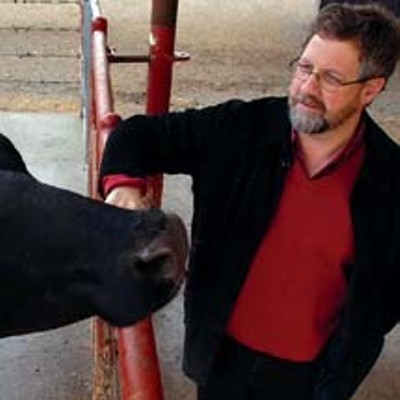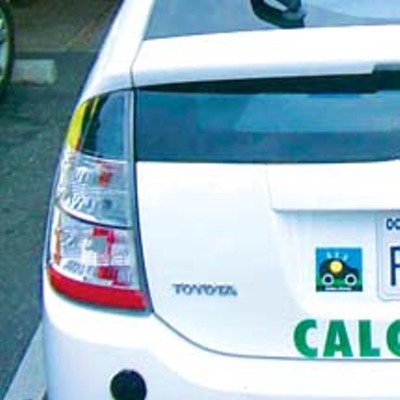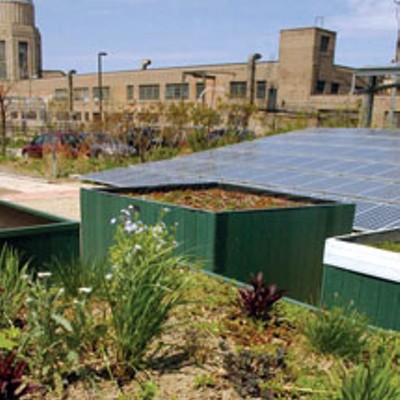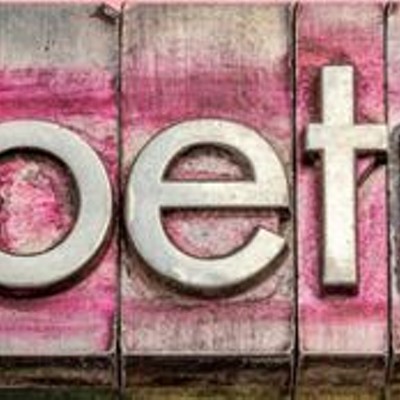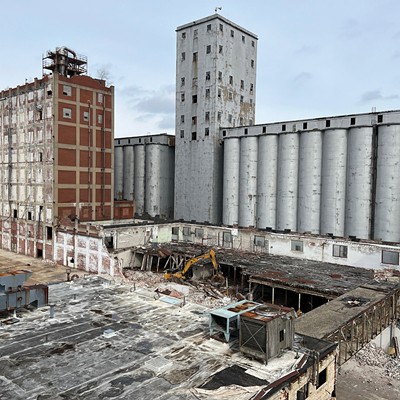Earth Talk
From the editors of E/The Environmental Magazine
[
{
"name": "Air - MedRect Combo - Inline Content 1",
"component": "11490391",
"insertPoint": "3",
"requiredCountToDisplay": "1",
"parentWrapperClass": "fdn-ads-inline-content-block"
},{
"name": "Air - MedRect Combo - Inline Content 2",
"component": "11490392",
"insertPoint": "7",
"requiredCountToDisplay": "5",
"parentWrapperClass": "fdn-ads-inline-content-block"
},{
"name": "Air - MedRect Combo - Inline Content 3",
"component": "11490393",
"insertPoint": "12",
"requiredCountToDisplay": "9",
"parentWrapperClass": "fdn-ads-inline-content-block"
}
]
Dear “Earth Talk”: What is the deal with
plastics recycling these days? Can you explain what the different numbers
molded onto the bottoms of plastic containers stand for? —Tom
Croarkin, Fairfield, Conn.
Confusion over what we can and cannot recycle continues to confound consumers. Plastics are especially troublesome because different forms of plastic require differing processes to be reformulated and reused as raw material. Some municipalities accept all types of plastic for recycling, whereas others only accept jugs, containers, and bottles with certain numbers stamped on their bottoms. The symbol code we’re familiar with — a single digit ranging from 1 to 7 surrounded by a triangle of arrows — was designed by the Society of the Plastics Industry in 1988 to allow consumers and recyclers to differentiate types of plastics while providing a uniform coding system for manufacturers. The numbers, which 39 states now mandate be molded or imprinted on all 8-ounce to 5-gallon containers, identify the type of plastic and, according to the American Plastics Council, an industry trade group, help recyclers do their jobs more effectively. The easiest and most common plastics to recycle are made of polyethylene terephthalate, better known as PETE, and are assigned a 1. Examples include soda and water bottles, medicine containers, and many other common consumer-product containers. Once it has been processed by a recycling facility, PETE can become fiberfill for winter coats, sleeping bags, and lifejackets. It may also be used to make bean bags, rope, car bumpers, tennis-ball felt, combs, cassette tapes, sails for boats, furniture — and, of course, other bottles. No. 2 is reserved for high-density polyethylene plastics. These include heavier containers that hold laundry detergents and bleaches, as well as milk, shampoos, and motor oils. No. 2 plastic is often recycled into toys, piping, plastic lumber, and rope. Like No. 1 plastic, it is widely accepted at recycling centers. Polyvinyl chloride, or PVC, commonly used in plastic pipes, shower curtains, medical tubing, vinyl dashboards — even some baby-bottle nipples — gets the No. 3 designation. Like No. 4 (wrapping films, grocery and sandwich bags, and other containers made of low-density polyethylene) and No. 5 (polypropylene containers used in Tupperware, among other products), few municipal recycling centers will accept it because of its very low rate of recyclability. No. 6 goes on polystyrene (Styrofoam) items such as coffee cups, disposable cutlery, meat trays, packing peanuts and insulation, which are widely accepted because they can be reprocessed into many items, including cassette tapes and rigid foam insulation. Last but far from least are items crafted from various combinations of the aforementioned plastics or from unique plastic formulations not commonly used. Usually imprinted with a 7 or nothing at all, these plastics are the most difficult to recycle and, for this reason, are seldom collected or recycled. More ambitious consumers can feel free to return such items to the product manufacturers to avoid contributing to the local waste stream and instead put the burden on the makers to recycle or dispose of the items properly.
For more information: Society of the Plastics Industry, www.socplas.org; American Plastics Council, www.americanplasticscouncil.org.
Send questions to “Earth Talk” in care of E/The Environmental Magazine, P.O. Box 5098, Westport, CT 06881; or e-mail [email protected].
Confusion over what we can and cannot recycle continues to confound consumers. Plastics are especially troublesome because different forms of plastic require differing processes to be reformulated and reused as raw material. Some municipalities accept all types of plastic for recycling, whereas others only accept jugs, containers, and bottles with certain numbers stamped on their bottoms. The symbol code we’re familiar with — a single digit ranging from 1 to 7 surrounded by a triangle of arrows — was designed by the Society of the Plastics Industry in 1988 to allow consumers and recyclers to differentiate types of plastics while providing a uniform coding system for manufacturers. The numbers, which 39 states now mandate be molded or imprinted on all 8-ounce to 5-gallon containers, identify the type of plastic and, according to the American Plastics Council, an industry trade group, help recyclers do their jobs more effectively. The easiest and most common plastics to recycle are made of polyethylene terephthalate, better known as PETE, and are assigned a 1. Examples include soda and water bottles, medicine containers, and many other common consumer-product containers. Once it has been processed by a recycling facility, PETE can become fiberfill for winter coats, sleeping bags, and lifejackets. It may also be used to make bean bags, rope, car bumpers, tennis-ball felt, combs, cassette tapes, sails for boats, furniture — and, of course, other bottles. No. 2 is reserved for high-density polyethylene plastics. These include heavier containers that hold laundry detergents and bleaches, as well as milk, shampoos, and motor oils. No. 2 plastic is often recycled into toys, piping, plastic lumber, and rope. Like No. 1 plastic, it is widely accepted at recycling centers. Polyvinyl chloride, or PVC, commonly used in plastic pipes, shower curtains, medical tubing, vinyl dashboards — even some baby-bottle nipples — gets the No. 3 designation. Like No. 4 (wrapping films, grocery and sandwich bags, and other containers made of low-density polyethylene) and No. 5 (polypropylene containers used in Tupperware, among other products), few municipal recycling centers will accept it because of its very low rate of recyclability. No. 6 goes on polystyrene (Styrofoam) items such as coffee cups, disposable cutlery, meat trays, packing peanuts and insulation, which are widely accepted because they can be reprocessed into many items, including cassette tapes and rigid foam insulation. Last but far from least are items crafted from various combinations of the aforementioned plastics or from unique plastic formulations not commonly used. Usually imprinted with a 7 or nothing at all, these plastics are the most difficult to recycle and, for this reason, are seldom collected or recycled. More ambitious consumers can feel free to return such items to the product manufacturers to avoid contributing to the local waste stream and instead put the burden on the makers to recycle or dispose of the items properly.
For more information: Society of the Plastics Industry, www.socplas.org; American Plastics Council, www.americanplasticscouncil.org.
Send questions to “Earth Talk” in care of E/The Environmental Magazine, P.O. Box 5098, Westport, CT 06881; or e-mail [email protected].
Illinois Times has provided readers with independent journalism for almost 50 years, from news and politics to arts and culture.
Your support will help cover the costs of editorial content published each week. Without local news organizations, we would be less informed about the issues that affect our community..
Got something to say?
Send a letter to the editor and we'll publish your feedback in print!


